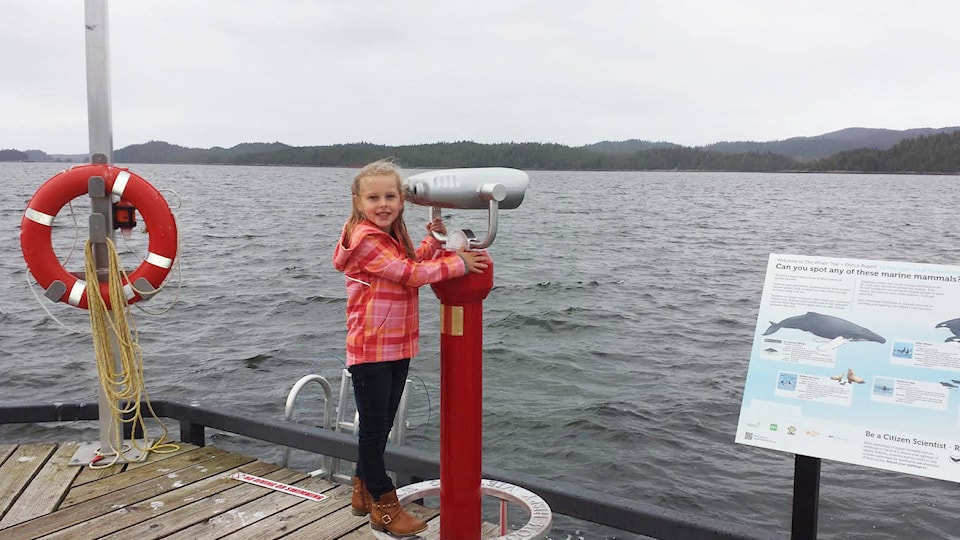Prince Rupert’s public breakwater just got even better, with the installation of viewing binoculars and interpretive signage as part of the West Coast’s “Whale Trail”.
The city became the latest stop on the network of shore-based marine mammal viewing sites along North America’s Pacific Coast, from the Central California coast to northern B.C. The Whale Trail is a Seattle-based organization dedicated to identifying sites along the west coast where the public is most likely to view marine mammals from shore.
The binoculars and signage was funded through the Vancouver Aquarium Marine Science Centre, Prince Rupert LNG and the Port of Prince Rupert.
“Improving our understanding of the marine mammals that transit Canada’s west coast waters is an effort we’re proud to support,” said Jason Scherr, Sustainability Manager for the Port of Prince Rupert.
Caitlin Birdsall, coordinator of the North Coast Cetacean Research Initiative through Vancouver Aquarium, coordinated the addition of the breakwater as a “Whale Trail” stop with the City’s marina staff.
“Prince Rupert’s breakwater provides an ideal viewing site for The Whale Trail, and its accessibility will help us in our efforts to engage citizen scientists to learn about and collect data on cetaceans,” Birdsall said.
As well as information about local species, the new signage encourages people to report their marine mammal sightings for conservation-based research. From the public breakwater, there are more than six species of marine mammals that can potentially be spotted, including sea lions, harbour seals, humpback whales, killer whales, and both harbour and Dall’s porpoises. Descriptions of each species are listed on the sign, along with behavioural attributes and the likelihood of spotting them.
Also on the sign, the names of all the different species were translated into Sm’algyax, the language of the local Tsmsyen people.
For more information on The Whale Trail, visit thewhaletrail.org.
